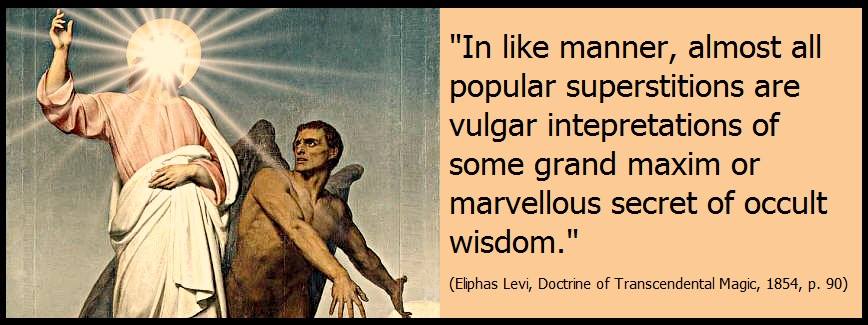Page 264
As the sun, what better image could be found for Jupiter emitting his golden rays than to personify this emanation in Diana, the all-illuminating virgin Artemis, whose oldest name was Diktynna, literally the emitted ray, from the word dikein. The moon is non-luminous, and it shines only by the reflected light of the sun; hence, the imagery of his daughter, the goddess of the moon, and herself, Luna, Astarte, or Diana. As the Cretan Diktynna, she wears a wreath made of the magic plant diktamnon, or dictamnus, the evergreen shrub whose contact is said, at the same time, to develop somnambulism and cure finally of it; and, as Eilithyia and Juno Pronuba, she is the goddess who presides over births; she is an AEsculapian deity, and the use of the dictamnus-wreath, in association with the moon, shows once more the profound observation of the ancients. This plant is known in botany as possessing strongly sedative properties; it grows on Mount Dicte, a Cretan mountain, in great abundance; on the other hand, the moon, according to the best authorities on animal magnetism, acts upon the juices and ganglionic system, or nerve-cells, the seat from whence proceed all the nerve-fibres which play such a prominent part in mesmerization. During childbirth the Cretan women were covered with this plant, and its roots were administered as best calculated to soothe acute pain, and allay the irritability so dangerous at this period. They were placed, moreover, within the precincts of the temple sacred to the goddess, and, if possible, under the direct rays of the resplendent daughter of Jupiter — the bright and warm Eastern moon.
The Hindu Brahmans and Buddhists have complicated theories on the influence of the sun and moon (the male and female elements), as containing the negative and positive principles, the opposites of the magnetic polarity. “The influence of the moon on women is well known,” write all the old authors on magnetism; and Ennemoser, as well as Du Potet, confirm the theories of the Hindu seers in every particular.
The marked respect paid by the Buddhists to the sapphire-stone — which was also sacred to Luna, in every other country — may be found based on something more scientifically exact than a mere groundless superstition. They ascribed to it a sacred magical power, which every student of psychological mesmerism will readily understand, for its polished and deep-blue surface produces extraordinary somnambulic phenomena. The varied influence of the prismatic colors on the growth of vegetation, and especially that of the “blue ray,” has been recognized but recently. The Academicians quarrelled over the unequal heating power of the prismatic rays until a series of experimental demonstrations by General Pleasonton, proved that under the blue ray, the most electric of all, animal and vegetable growth was increased to a magical
Page 265
proportion. Thus Amoretti’s investigations of the electric polarity of precious stones show that the diamond, the garnet, the amethyst, are – E., while the sapphire is + E. Thus, we are enabled to show that the latest experiments of science only corroborate that which was known to the Hindu sages before any of the modern academies were founded.
An old Hindu legend says that Brahma-Prajapati, having fallen in love with his own daughter, Ushas (Heaven, sometimes the Dawn also), assumed the form of a buck (ris’ya) and Ushas that of a female deer (rohit) and thus committed the first sin. Upon seeing such a desecration, the gods felt so terrified, that uniting their most fearful-looking bodies — each god possessing as many bodies as he desires — they produced Bhutavan (the spirit of evil), who was creat by them on purpose to destroy the incarnation of the first sin committed by the Brahma himself. Upon seeing this, Brahma-Hiranyagarbha repented bitterly and began repeating the Mantras, or prayers of purification, and, in his grief, dropped on earth a tear, the hottest that ever fell from an eye; and from it was formed the first sapphire.
This half-sacred, half-popular legend shows that the Hindus knew which was the most electric of all the prismatic colors; moreover, the particular influence of the sapphire-stone was as well defined as that of all the other minerals. Orpheus teaches how it is possible to affect a whole audience by means of a lodestone; Pythagoras pays a particular attention to the color and nature of precious stones; while Apollonius of Tyana imparts to his disciples the secret virtues of each, and changes his jewelled rings daily, using a particular stone for every day of the month and according to the laws of judicial astrology. The Buddhists assert that the sapphire produces peace of mind, equanimity, and chases all evil thoughts by establishing a healthy circulation in man. So does an electric battery, with its well-directed fluid, say our electricians. “The sapphire,” say the Buddhists, “will open barred doors and dwellings (for the spirit of man); it produces a desire for prayer, and brings with it more peace than any other gem; but he who would wear it must lead a pure and holy life.” Diana-Luna is the daughter of Zeus by Proserpina, who represents the Earth in her active labor, and, according to Hesiod, as Diana Eily-

Moe is the founder of GnosticWarrior.com. He is a father, husband, author, martial arts black belt, and an expert in Gnosticism, the occult, and esotericism.

![How one in the province of the Northumbrians, rose from the dead, and related many things which he had seen, some to be greatly dreaded and some to be desired [Circ. 696 A.D.] | Book 5 | Chapter 11 How one in the province of the Northumbrians, rose from the dead, and related many things which he had seen, some to be greatly dreaded and some to be desired [Circ. 696 A.D.] | Book 5 | Chapter 11](https://www.gnosticwarrior.com/wp-content/plugins/contextual-related-posts/default.png)




